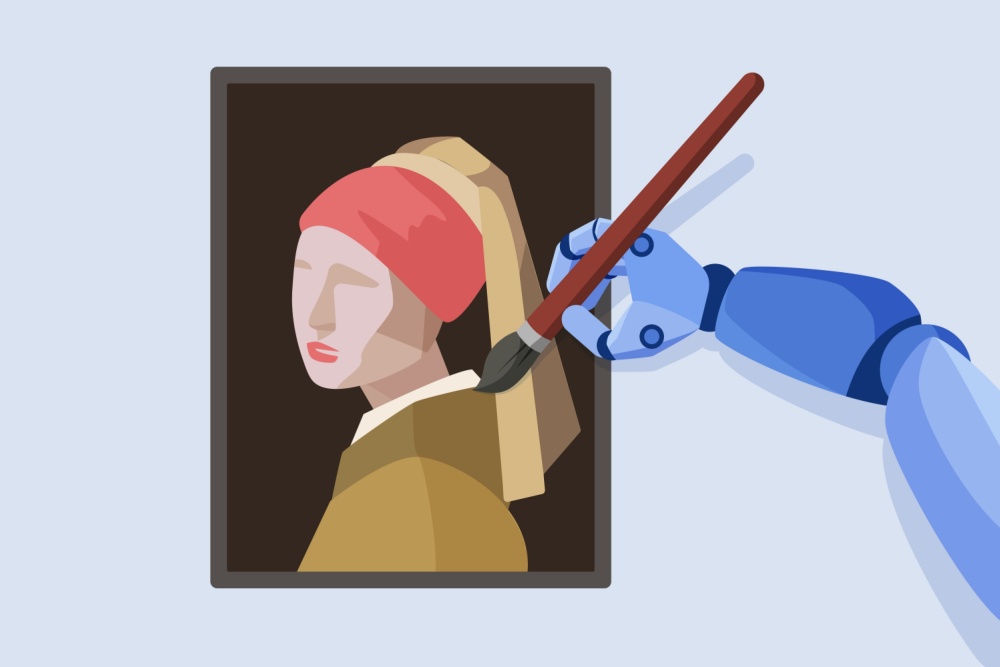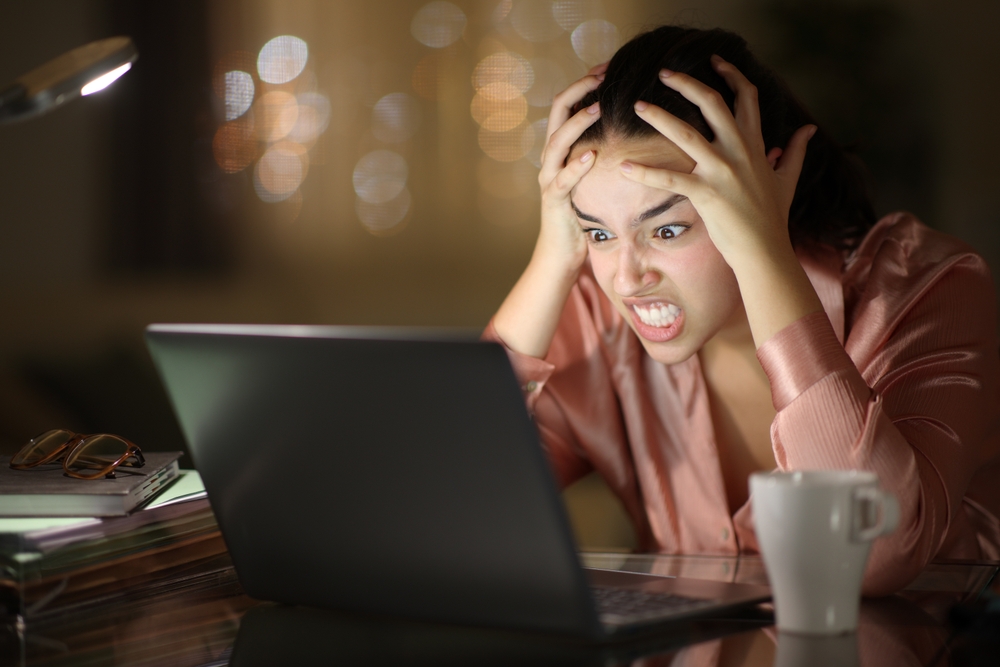Usually, when we ask our cartoonist for a sketch, it takes a minimum of a few days to get a draft back. And then it’s often not quite what we envisioned, and we have to spend more time on refining the art to match our imaginations. Once we approve the sketch, there’s still the coloring stage, which adds even more time. The whole process can take weeks, not to mention the cost, which runs between $1,000 and $2,000.
So, what could AI do for us in this space? We gave it a shot and tried to create a postcard using AI. But in the end, we had to turn to our trusty cartoonist to fix it. This led me to the conclusion: AI-generated art might be useful for prototyping, but when it comes to the final product, it’s better to stick with stock art or a commissioned artist.
This got me thinking more broadly: While some people see AI-generated art as revolutionary, there are some pretty strong arguments for why it might not live up to the hype. So, what are the downsides?
Devaluing Human Creativity
One of the biggest flaws with AI-generated art is that it lacks the human touch—something that gives art its meaning and uniqueness. When we rely on algorithms to churn out images, we risk losing the skills, emotions, and experiences that human artists bring to their work. Art isn’t just about making something that looks good; it’s about expressing feelings and intuition—things AI just can’t replicate.
The Uncanny Valley Effect
Another issue is what some people call the “uncanny valley” effect. AI can make technically impressive images, but they often feel… off. There’s something unsettling about them, like they’re missing the soul or authenticity that human-created art has. This disconnect can make AI-generated art less effective at engaging or resonating with people.
A Flood of Low-Quality Content
The sheer volume of images AI can produce is overwhelming. Social media and other platforms are getting flooded with AI-generated content, and this flood is making it harder for real, human artists to stand out. With so much mediocre content out there, genuine artistic voices can easily get lost in the noise.
Copyright and Ethics Concerns
There’s also a big question around ethics and copyright. AI art generators are trained on existing works, which raises concerns about whether they’re infringing on the intellectual property of artists. Not only does this pose legal problems, but it also threatens the originality and integrity of the art world as a whole.
No Emotional Depth
AI can make beautiful images, but it lacks emotional intelligence. Human art reflects personal experiences—joys, struggles, and unique perspectives. Without these elements, AI-generated art feels flat and doesn’t connect with people on a deeper emotional level.
The Value of Human Intent
At the heart of art is intent. Artists make thoughtful choices about composition, color, and subject matter to convey a message or emotion. AI, on the other hand, works off algorithms and data, with no real intention behind what it creates. That’s why even though AI art may look cool, it often feels hollow.
The Silver Lining
That said, AI art isn’t entirely without merit. At CGNET, we may never use AI-generated art for serious content creation, but we’ve found some useful ways to incorporate it:
- Prototyping: It helps us quickly test and refine ideas.
- Visualizing Concepts: We can share ideas with visuals, not just words.
- Collaborative Brainstorming: It makes team collaboration more dynamic.
- Creative Inspiration: AI can bring fresh ideas to the table and help define a theme.
- Accessibility: It democratizes creativity, allowing more people to contribute visually, even if they struggle to put their ideas into words.
In short, while AI art might not replace human creativity anytime soon, it does have its place—as a tool for brainstorming and collaboration, if nothing else.





0 Comments